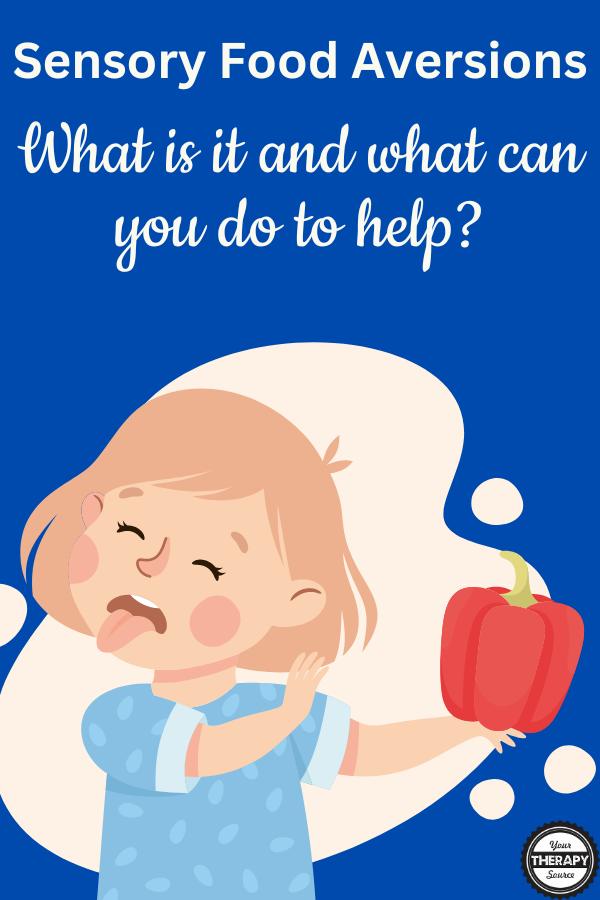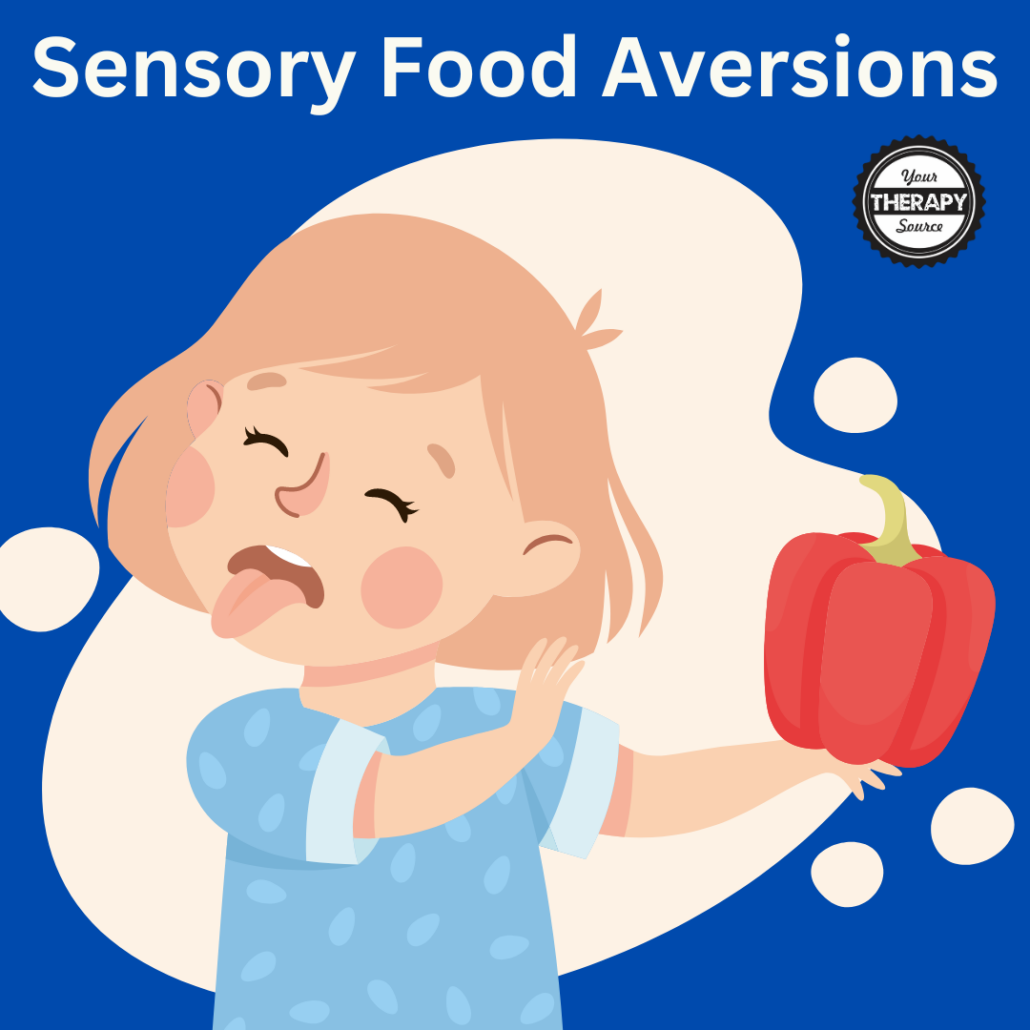Sensory Food Aversions in Children

Food is not just a source of nutrition; it’s a complex sensory experience that can evoke strong reactions, particularly in children. Among the myriad challenges parents face, sensory food aversions stand out as a perplexing and often distressing issue. This issue, where individuals—especially children—reject foods based on their sensory characteristics, such as texture, smell, or temperature, may affect children. Learn more about the nature of sensory food aversions, distinguishing them from picky eating, examining their relationship with sensory processing disorders, and offering strategies to support children facing these challenges. Sensory food aversions present a significant challenge, but with the right strategies and support, children can overcome these aversions to enjoy a wider variety of foods.
What Are Sensory Food Aversions?
Sensory food aversions (SFA) are more than mere dislikes; they are intense negative reactions to the sensory attributes of food. These aversions can be based on any sensory input—color, texture, temperature—and lead to a narrowed field of accepted foods. Remarkably, approximately 50% of children demonstrate selective eating behaviors by the age of two, with many showing signs of SFA. While some outgrow these patterns, others continue to struggle, indicating a persistent challenge that extends beyond typical picky eating.

Mindful Eating Placemats
Symptoms of Sensory Food Aversions and Professional Support
Sensory food aversions manifest through a variety of symptoms, deeply affecting children’s eating habits and nutritional intake. Recognizing these symptoms is crucial for early intervention, especially in individuals with autism spectrum disorder, sensory issues, or other underlying conditions. Here’s a closer look at the symptoms and the professionals who can offer support:
Symptoms of Sensory Food Aversions:
- Strong Dislike or Refusal of Specific Types of Food: This can be based on the texture of food, color, smell, or temperature. Children might reject crunchy foods, pureed food, or have a preference for only soft foods or particular foods.
- Sensory Overload During Meals: Children may become overwhelmed by the sensory input at meal times, leading to distress, refusal to eat, or even sensory overreactions such as gagging or vomiting when presented with certain textures or smells.
- Limited Food Preferences: A child might have a very narrow range of food they will eat, often sticking to what they consider safe or preferred foods, which can lead to nutritional deficiencies.
- Physical Symptoms: Such as gagging or choking on new or specific textures, indicating oral-motor issues or oral-sensory problems. Some children might also show signs of discomfort, like pushing food away or becoming upset when new foods are introduced.
- Extreme Picky Eating: Beyond typical picky eating, children with sensory food aversions might eat a very limited variety of foods and refuse to try new things, which can persist as they grow older.
Professionals Who Can Help:
- Occupational Therapists: Specialists in addressing sensory sensitivities, including sensory-based feeding difficulties. They work on desensitizing children to the sensory aspects of foods, like texture or smell, and help develop strategies for expanding food choices.
- Speech Pathologists: Focus on the oral-motor aspect of eating, helping children who have difficulty with the physical act of eating due to sensory aversions or oral motor skills deficits. They can provide strategies for safely introducing solid foods and improving chewing and swallowing.
- Medical Team: Including the child’s pediatrician and possibly a gastroenterologist or allergist, to rule out medical issues such as food allergies, gastrointestinal problems, or other health conditions that could be contributing to feeding issues.
- Dietitians: Offer guidance on ensuring nutritional needs are met, even with limited food preferences. They can suggest healthy foods and different ways to introduce essential nutrients into a child’s diet.
- Speech Therapists and Language Therapists: Beyond addressing speech development, they can also provide language therapy that supports communication about food preferences, dislikes, and comfort levels during meal times.
- Psychologists: Help address any anxiety or negative experiences associated with eating, which is essential for children who have had traumatic experiences with feeding or those with an extreme fear of new foods.

Therapeutic Food Survey
An interdisciplinary approach is often the most effective strategy for addressing sensory food aversions, combining insights from various professionals to create a comprehensive treatment plan. This team works together to understand the child’s sensory system, food sensitivities, and feeding disorders, providing a coordinated effort to make meal times less stressful and more enjoyable for the child and family. Through a combination of medical advice, therapeutic interventions, and supportive strategies, children with sensory food aversions can learn to explore and enjoy a wider range of foods, leading to better health and well-being over time.
What is a Food Aversion Versus Picky Eating?
Understanding the difference between a food aversion and picky eating is crucial. Picky eaters may have a limited palate but are generally willing to try new foods under the right circumstances. In contrast, children with sensory food aversions often exhibit a categorical refusal of foods based on sensory qualities, leading to a more profound and challenging level of selectivity. This distinction is vital for developing appropriate strategies for encouragement and support.
Sensory Processing Disorder and Food Aversions
Sensory Processing Disorder (SPD) can play a significant role in food aversions. Children with SPD experience sensory information differently, which can make certain foods overwhelming. This heightened sensitivity is not just a preference but a physiological response to sensory inputs, making what might seem like a simple meal to one child a daunting challenge to another.
Strategies to Help Children with Sensory Food Aversions
Addressing sensory food aversions (SFA) effectively involves a blend of patience, empathy, and science-backed approaches. Here are some suggestions to support children with these aversions:
- Repeated Exposure Without Coercion:
- Introduce new foods multiple times in a non-pressuring way, allowing the child to familiarize themselves with the sensory information (e.g., texture, smell) without the expectation of eating it immediately.
- Positive and Responsive Feeding Environment:
- Ensure mealtimes are structured, yet flexible, paying attention to the child’s hunger cues and sensory sensitivities.
- Use non-food based positive reinforcement, such as verbal praise, for engagement with food, even if it’s just touching or smelling.
- Modeling Healthy Eating Behaviors:
- Caregivers and family members should demonstrate a variety of healthy eating habits, showcasing a wide range of foods including crunchy foods, soft foods, and pureed foods, to normalize exposure to different textures and sensory experiences.
- Distraction-Free Meal Times:
- Create a calm, focused mealtime atmosphere with few distractions to help the child concentrate on the sensory experiences of eating.
- Understanding and Respecting Sensory Thresholds:
- Acknowledge the child’s specific sensory sensitivities—whether to the texture of the food, color, or smell—and gently encourage exploration within their comfort zone.
- Encouragement of Food Exploration:
- Promote sensory play with food outside of mealtimes, such as playing with safe, non-toxic food items to get used to their texture, smell, and color in a fun, stress-free setting.
- Collaboration with Professionals:
- Work with occupational therapists, speech-language pathologists, and the child’s pediatrician to develop a comprehensive treatment plan tailored to the child’s sensory processing issues and food aversions.
- Occupational therapy can offer specific interventions focused on improving oral-motor skills and managing sensory overreactions to foods.
- Use of a Variety of Foods:
- Introduce a broad spectrum of foods early on, including different food groups and textures, to encourage a more varied diet and reduce the likelihood of severe cases of selective eating.
- Incorporating Mindful Eating Practices:
- Engage in mindful eating exercises that focus on the sensory experiences of eating, encouraging the child to notice the smell, color, and texture of their food in a positive way.
- Avoiding Negative Mealtime Experiences:
- Steer clear of force feeding or using food as a reward, which can lead to power struggles at the dinner table and reinforce negative associations with eating.
By integrating these strategies, caregivers can create a supportive, understanding environment that encourages children with sensory food aversions to explore new foods and sensory experiences at their own pace, aiming for a gradual expansion of their diet and improvement in their overall nutritional intake.
Can Mindful Eating Help with Food Aversions?
Mindful eating, focusing on the experience of eating with attention and without judgment, may offer a novel approach to managing food aversions. By encouraging children to engage with their food at a sensory level—smelling, touching, and even playing with it without the pressure to eat—caregivers can foster a more curious and less anxious relationship with food. This approach aligns with the broader goal of making mealtime a positive, stress-free experience for both children and their caregivers.
Summary: Understanding Sensory Food Aversions
Sensory Food Aversions (SFA) represent a complex challenge affecting many children, particularly those with autism spectrum disorder, underlying medical conditions, or heightened sensory sensitivities. These aversions are characterized by a strong reluctance or refusal to eat certain foods based on their sensory properties—such as texture, smell, color, and temperature. Unlike typical picky eating, SFA can lead to significant nutritional deficiencies, stress during meal times, and a profound impact on family dynamics.
Key Takeaways
- Nature of Sensory Food Aversions: SFA are distinguished by an intense negative reaction to the sensory characteristics of food, leading to a limited diet. They differ from picky eating in their intensity and the specific sensory inputs that trigger aversions.
- Symptoms and Impact: Key symptoms include a strong dislike or refusal of specific types of food based on their sensory attributes, sensory overload at meal times, limited food preferences, and physical symptoms such as gagging. These symptoms can lead to nutritional deficiencies and contribute to stress within the family unit.
- Strategies for Support: Addressing SFA requires a multifaceted approach:
- Repeated, non-coercive exposure to new foods.
- Creating a positive and responsive feeding environment.
- Modeling healthy eating behaviors.
- Understanding and respecting the child’s sensory thresholds.
- Encouraging sensory play with food to promote exploration.
- Professional Support: An interdisciplinary team, including occupational therapists, speech pathologists, dietitians, psychologists, and pediatricians, plays a crucial role in managing SFA. This team approach helps in devising strategies tailored to the child’s specific needs, focusing on expanding the child’s diet, improving nutritional intake, and making meal times a positive experience.
- Importance of Early Intervention: Early identification and intervention are critical to addressing sensory food aversions effectively. This can prevent the development of more severe eating disorders and ensure the child receives the necessary nutrients for healthy growth and development.
- Encouragement and Patience: Caregivers are encouraged to approach SFA with patience, understanding, and a commitment to gradually expanding the child’s dietary preferences. Positive reinforcement, avoiding pressure, and creating structured yet enjoyable meal times can facilitate progress.
Sensory food aversions present a significant challenge, but with the right strategies and support, children can overcome these aversions to enjoy a wider variety of foods. Understanding the nature of SFA, recognizing the symptoms, and seeking professional help are critical steps toward achieving a balanced diet and a happier mealtime experience for children and their families.
REFERENCE
Caldwell, A. R., & Krause, E. K. (2021). Mealtime behaviours of young children with sensory food aversions: An observational study. Australian occupational therapy journal, 68(4), 336-344.
More Helpful Information
- Mindful Eating Worksheets
- Feeding Problems in Children with Autism
- Characteristics of Food Refusal in Children with Autism
- Oral Sensory Seekers



